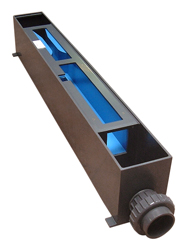Maybe not very scientific, but what is the current best method for measuring flow rates of streams? I want to measure amount of water going in sinks and coming out of risings...see if they all add up!
Stream beds are a series of variable width/depth pools and falls, and I can't see any accurate way of floating a bit of paper down for a cu/sec measurement! I'm sure there must be a more modern method...
DL
Stream beds are a series of variable width/depth pools and falls, and I can't see any accurate way of floating a bit of paper down for a cu/sec measurement! I'm sure there must be a more modern method...
DL




